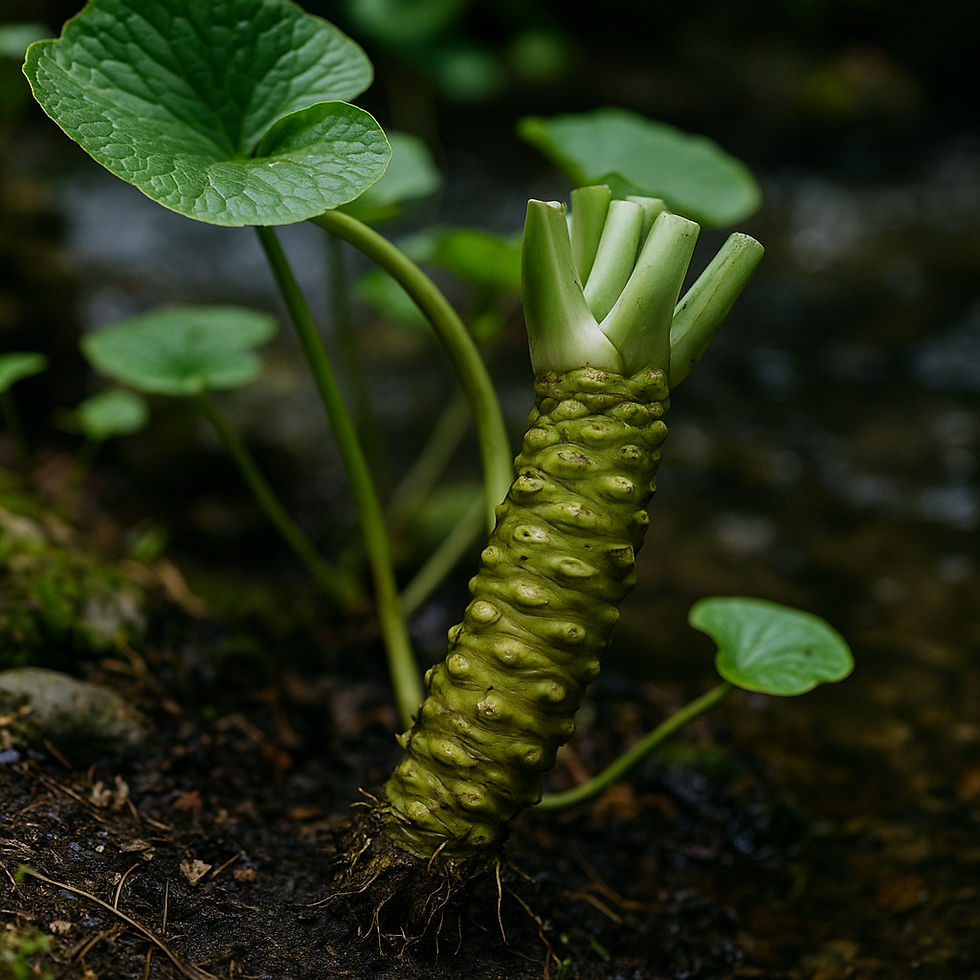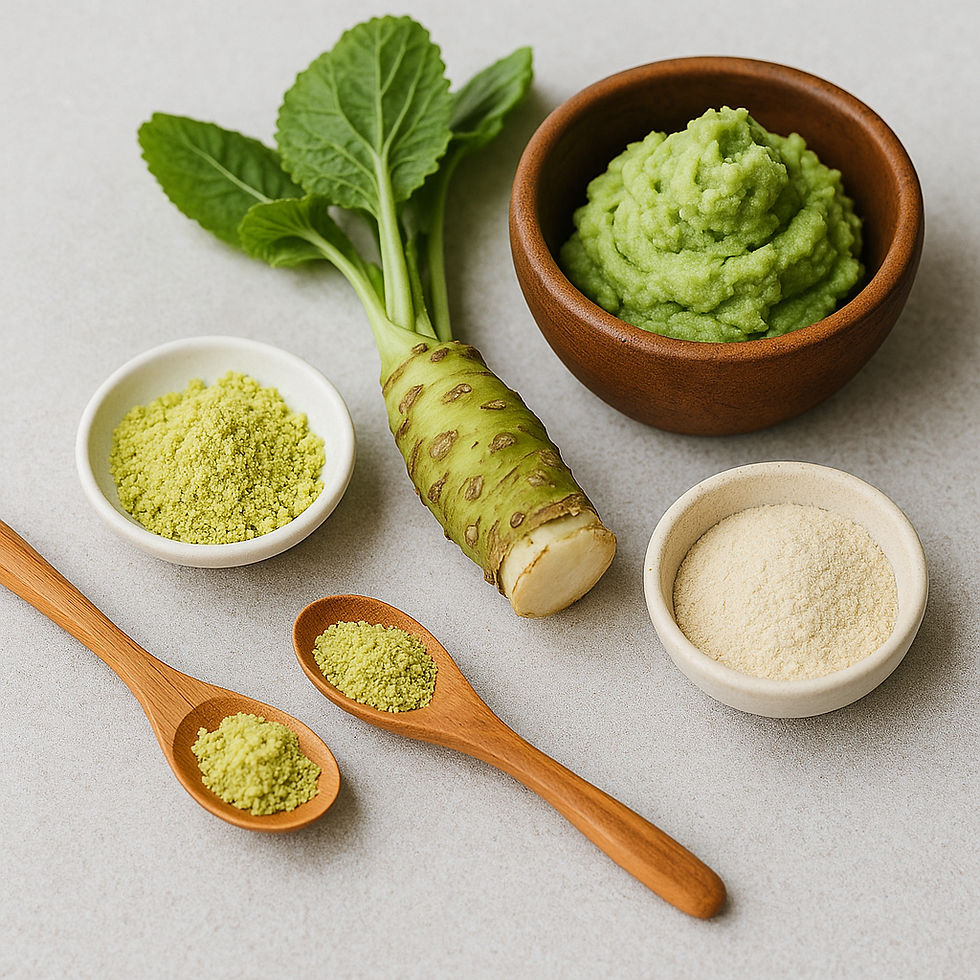Wasabi Wisdom: How to Enjoy It the Right Way
- Taras Skyba
- Aug 4
- 2 min read
Explore the origins, etiquette, and best ways to enjoy this bold Japanese condiment in kosher sushi dining.
When you think of sushi, you probably imagine beautifully rolled maki, fresh nigiri, or maybe that perfect piece of salmon sashimi. But no sushi experience is truly complete without a dab of bright green wasabi.
What Is Wasabi, Really?
Wasabi is a traditional Japanese condiment made from the grated root of the wasabia japonica plant. It has a sharp, aromatic heat that quickly rises through the nose — unlike the lingering spiciness of chili peppers. However, many wasabi pastes served today are actually a blend of horseradish, mustard, and green coloring. Authentic wasabi is rare, delicate, and expensive.
At Jersey Shore Sushi Co., we offer a high-quality kosher alternative that maintains the bold spirit of traditional wasabi, while remaining in line with standards.

The Purpose of Wasabi in Sushi
Wasabi isn’t just for heat — it serves multiple roles in Japanese cuisine:
• Flavor balance: Wasabi enhances the umami in sushi without overwhelming it.
• Palate cleanser: Its sharp bite resets the taste buds between bites.
• Antibacterial properties: Traditionally, it was used to prevent foodborne illness from raw fish.
Sushi & Wasabi: A Harmonious Match
In a kosher sushi setting, the ingredients must meet strict preparation standards. That includes condiments. Our wasabi is carefully selected to ensure it’s free from non-kosher additives, making it a safe and delicious pairing for our customers.
Whether you’re enjoying tuna, yellowtail, or a veggie roll, a small amount of wasabi can elevate the entire experience — without stealing the spotlight.
⸻
How Not to Use Wasabi (Common Mistakes)
1. Don’t mix wasabi into soy sauce.
While it’s common in the West, this practice is frowned upon in traditional Japanese etiquette. It dulls the distinct flavors of both.
2. Don’t use too much.
Wasabi is meant to complement, not dominate. A small dab on top of the fish is usually enough.
3. Don’t assume every green paste is true wasabi.
Ask your sushi chef or server — most wasabi outside Japan is a substitute (and still delicious when prepared well).

Pro Tips: How to Eat Wasabi the Right Way
• For nigiri, place a small amount of wasabi between the rice and the fish (some chefs already do this for you).
• For maki rolls, a light touch on top before dipping is ideal.
• Cleanse your palate with pickled ginger between different types of sushi to appreciate each flavor.
Final Thoughts: Wasabi is More Than Just a Side
At Jersey Shore Sushi Co., we believe wasabi is not just a condiment — it’s part of the art of sushi. From its roots in Japanese tradition to its modern kosher adaptations, it deserves attention, respect, and a thoughtful place on your plate.
Next time you visit us, try wasabi with intention — and feel the difference it makes.
.png)




Now I know more about wasabi! Thanks